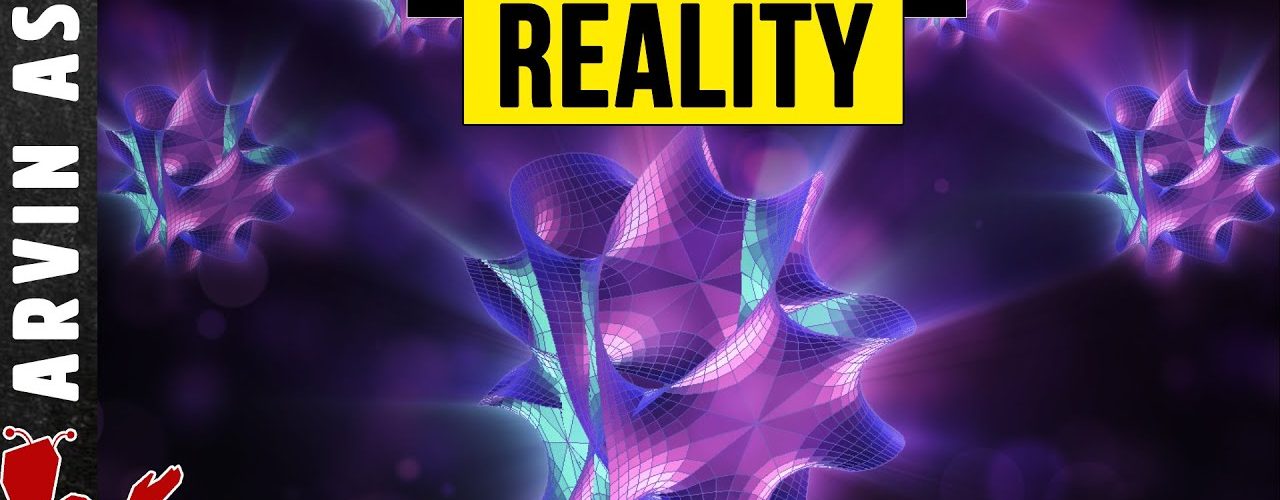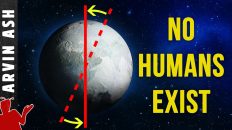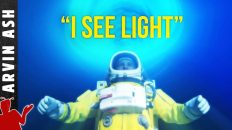What is the true nature of reality? 11 dimensions?
The holy grail of physics is a theory of everything.
It would describe the true nature of reality. It would give us the answer to questions like what is dark energy and dark matter. It would unite quantum mechanics with General relativity, and help us understand the behavior of gravity at the smallest scales.
show the origin of all forces emanating from perhaps one master force, and the origin of all particles emanating from perhaps one super particle.
It would be the ultimate answer to every question that asks why something is the way it is.
Do we have such a theory? No, but we have something that comes the close to it. And it may give us a clue to the true nature of reality. Let’s look at what this is, and figure out what it may be trying to tell us about the true nature of our existence.
We don’t have a theory of everything, but we do have something that comes a significant fraction of the way to being there.
This is called the standard model of particle physics.
This is the most successful and tested model describing the true nature of reality that we have ever had. This model is so good in fact, that when the theory of everything is discovered, it will have to be a refinement of the standard model,
just like Einstein’s theory of general relativity is a refinement of Newtons law of universal gravitation.
This model explains the subatomic makeup of all the atoms, explains chemistry, magnetism, nuclear physics, and many other things.
The only thing it is missing is gravity. Gravity doesn’t work using the equations of quantum mechanics. And there is no quantum theory of gravity yet.
But the Standard model does not predict absolutely everything. It shows us the fundamental particles that make up all matter and 3 of the four forces governing them.
But there are 19 parameters that it does not predict. These parameters have to be calculated through measurement and put in as constants within the model. What are these 19 parameters?
These are.
Masses of six quarks and three of the leptons = 9
Mass of Higgs boson and strength of the Higgs field = 2
Mean lifetime of How 4 of the quarks decay (down, strange, charm, bottom) = 4
Strength of electromagnetic field, strong and weak forces = 3
Finally, a number describing the strong force interaction between quarks and gluons = 1
These are called Free parameters and there are 19 of them.
So these are all constants that have to be measured and put into the equation. There is nothing that predicts these. If you were to ask, why are these constants equal to the number that they are? I would just have to tell you that it is just the way our universe happens to be. From what we can tell, in a different universe, these parameters could have been different.
There may be an underlying theory that shows that these constants could not be anything other than the numbers that they are, but that doesn’t seem to be the case form what we understand right now.
What would happen if these constants were some other number rather than the number that we observe?
Well, depending on which number you are talking about and the magnitude of change in that number, our universe would be anywhere from being slightly different to being completely different than what it is right now.
For example, if the strength of the electromagnetic force was stronger, we would likely have smaller atoms but chemistry would probably still exist. The universe may be only slightly different in that case.
However, if the masses of the up and down quarks was much different, there would no atoms and we would have a completely different universe.
Why? Because it would change the relative mass of protons and neutrons. Neutrons in our universe are only about 0.1% more massive than Protons. But this difference is crucial because it allows Neutrons to decay into Protons and an electron and antineutrino.
If the relative mass was reversed, then protons would decay instead into neutrons. And eventually, we would end up with a universe full of neutrons. No protons means no atoms and no solid structures, and no chemistry.
This is the crux of the fine tuning argument, that these constants along with other constants in the universe, such as the gravitational constant in General relativity and the cosmological constant appear to be such that life in our particular universe can exist.
I will get into the details of the fine tuning argument in another video, but for now let’s take a look at what would happen if these constants were different. Potentially, you could have a set of universes that was something like this number:
R^19 – The R represents the variations of the numbers that would make a different universe. This could be a very large number depending on the magnitude of changes that could cause a completely different universe because some of these numbers only have to be different one in a thousand parts or more. So for example 1000 to the 19th power is a huge number. Added together, this number may indicate a truly mind bogglingly large number of different universes.
If these constants turn out to indeed be arbitrary, not based on any underlying theory, then it may lend credence to the multiverse theory of reality. In other words, there could be universes where every variation of these numbers has happened.
In fact, a version of the most studied theory of everything, and the one that has the greatest number of physicists working on it, predicts such a vast number of multiverses. This is M-theory which is a theory that unites all the consistent versions of String Theory. M-theory brought all of the string theories together. It did this by asserting that strings are really one-dimensional slices of a two-dimensional membrane vibrating in 11 dimensional spacetime.
This is the leading candidate for a theory of everything that many physicists support.
And if true, it could represent the true nature of reality. Some estimates have shown that the number of multiverses predicted by the theory is 10^500 power. That’s one followed by 500 zeros. This is unimaginably huge.
The theory has some problems though, like It predicts the existence of a subatomic particle called a graviton, which has not been detected so far.
It also requires a universe with up to 11 dimensions, because the strings have to be able to vibrate in this number of dimensions in order for the theory to work mathematically.
10 dimensional mathematics is also so complex that the theory has been derided by many, including me, because it’s mathematics can be manipulated to represent almost any imaginable universe. But, what if it’s true? Maybe almost any imaginable universe actually exists.
Maybe given the number of physicists that support it and are working on it, could it be that they are in fact on the right track? Could they be onto something?
But if this is really true, then where are the other dimensions? We only see 3 spatial dimensions, and 1 time dimension. Where are the other six to seven dimensions required by this theory.
String theorists say that these dimensions may be compactified on a very small scale, so for example, a rug looks 2 dimensional from very far away, but close-up you can see that it has a third dimension, a thickness. And it also has small loops and textures on its surface similar to representing other potential dimensions.
For example if you go down to the scales that are closer to the scale of a plank length, extra dimensions may be loops as shown in the grid here. Now imagine the loops being more complex shapes, like a Calabi-Yau manifold. This is a mathematical shape that can contain all of the 6 missing dimensions. Now imagine a string vibrating not only in our 3 dimensions but since strings can be really small, they can vibrate in these smaller dimensions as well.
The way they vibrate determines the particles that they represent. One vibration can be a photon, another vibration can be gravity, another can be an electron or other form of matter.
In string theory, the strings and their vibrations are affected by the geometry in which those strings are moving.
The issue is that the shape of those extra dimensions is not known, but if it was known, then the mathematics of String theory could tell you exactly what the vibrations would be. And this would give us a theoretical basis for why the parameters are the numbers that they are.
In other words, the shape of the extra dimension may determine the exact magnitude of those parameters.
And if these shapes were any different, then the numbers would be different, and the universe, as we know it would not exist. A different universe would exist perhaps.
Does this mean that the numbers could have been different if the shape of the dimensions was different? That is possible.
Can we test for these other dimensions? It turns out we can, using the Large Hadron Collider.
If after a collision of particles at extremely high energy, scientists detect less energy than was present in the two particles before the collision, then this would be an indication that the extra energy may have been transferred to these extra dimensions.
So what has the LHC found? Well, so far, the LHC has not found extra dimensions.
But even if we found out the shape of the extra dimensions, and determined that the math of string theory predicts what the exact numbers that we measured, this may still leave the question of why the shape of those extra dimensions is the way that it is.
So even if string theory answers the question of the true nature of the universe, it may still imply that there could be other universes where the shapes of those extra dimensions are different than what we observe.
So why does our universe happen to be the way that it is? Why do we find ourselves in this relatively peaceful, orderly universe that supports life?
Why should nature favor one kind of universe, or one type of existence over another? There doesn’t seem to be any reason for that.
You could invoke God here and say that it was a supernatural force that caused this through his or her sheer will, or divine intervention.
An intriguing alterative, and possibly testable theory is that we are part of a large multiverse. Perhaps one of a multitude of membranes of the M-theory.
How would we test for this? The LHC could give us a clue. The soon to launched James Webb telescope will allow us to peer farther in space and further back in time and perhaps find an anomaly that indicates the influence with another membrane.
In the future, we may be able to simulate multiple dimensions and universes.
It may be that we just happen to find ourselves in that one universe out of innumerable other ones where the shapes of our compactified dimensions happen to be such that life is possible. There is no other membrane where we would find ourselves.
This universe perhaps is nothing special – it is but one of many possible universes that may number something like 10^500 or more. And the only thing that may make this universe unique — is that you are in it. And I, my friend, am glad that you are.







